This simple guide for how to make creamy homemade Greek yogurt without a yogurt maker requires two easy ingredients and a few everyday kitchen items. So ditch the store bought Greek yogurt and make this healthier, more flavorful recipe at home!
"I made this just like you said and it was gone in two days! "
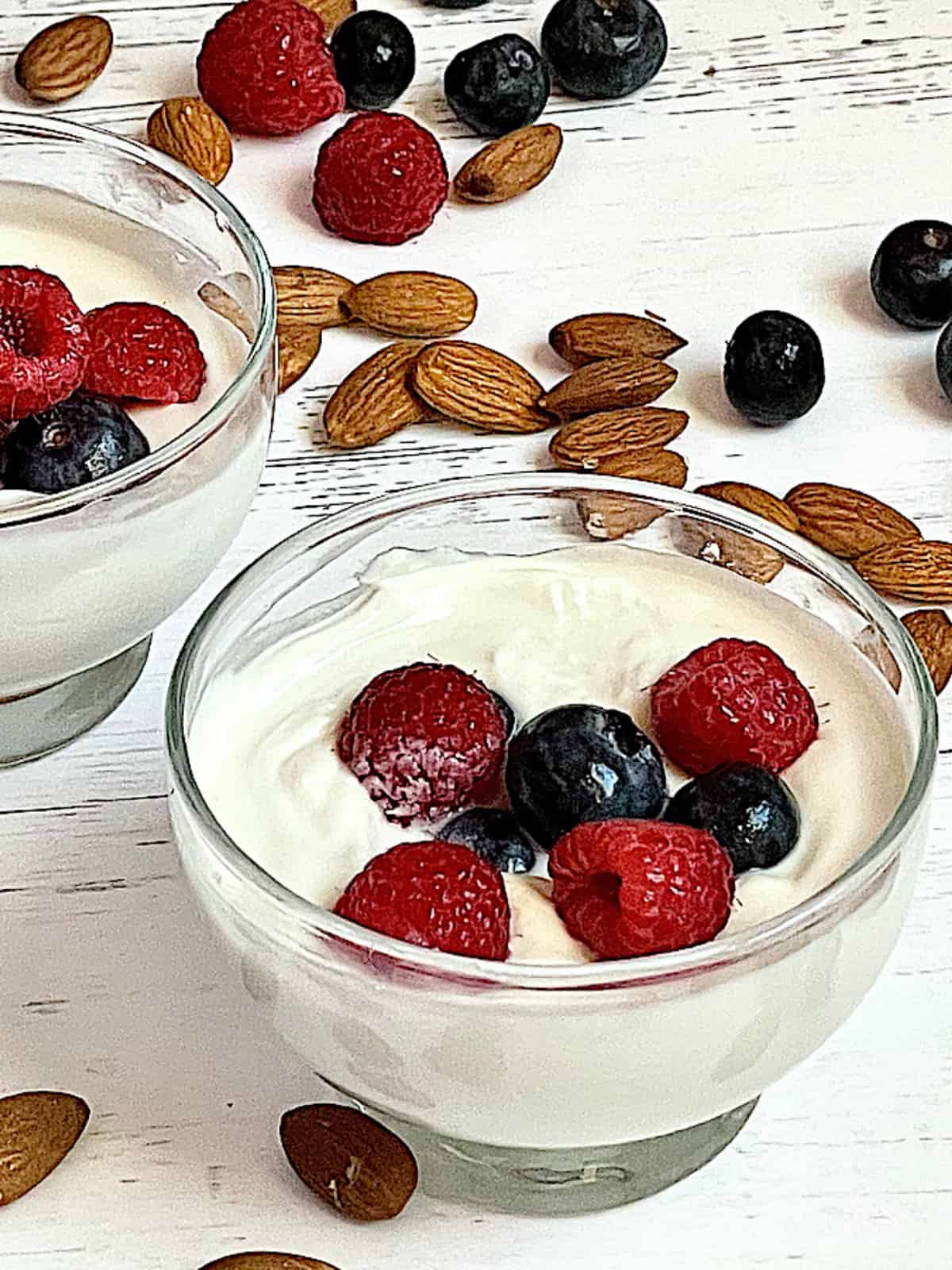
Table Of Contents
How To Make Greek Yogurt
Making Greek yogurt at home is not only a less expensive way to enjoy this tasty, snack, it's healthier and super simple to do with just a few basic kitchen tools and 2 ingredients. Knowing how to make yogurt at home is also a feat to brag about because it seems so complicated, but I promise it's not!
What Is Greek Yogurt?
Greek yogurt, also known as strained yogurt, is a type of yogurt that has undergone a straining process to remove a portion of its whey (the liquid component of yogurt). This straining process results in a thicker, creamier yogurt with a higher protein content compared to regular yogurt. Greek yogurt is known for its rich and creamy texture, which makes it a popular choice for eating as a snack, mixing into smoothies, or using as a base for sauces, dressings, and desserts. It also makes a great breakfast for Greek yogurt bowls.
What You Need To Make Homemade Yogurt
To make Greek yogurt at home you need a heavy pot with a lid (such as a dutch oven), a digital thermometer, a whisk, a skimmer spoon, and a heavy towel for incubation. You'll need 8 cups of milk and ⅔ cups of plain Greek yogurt to use as your starter. For low fat yogurt, you can use plain nonfat, reduced fat or low fat dairy milk.
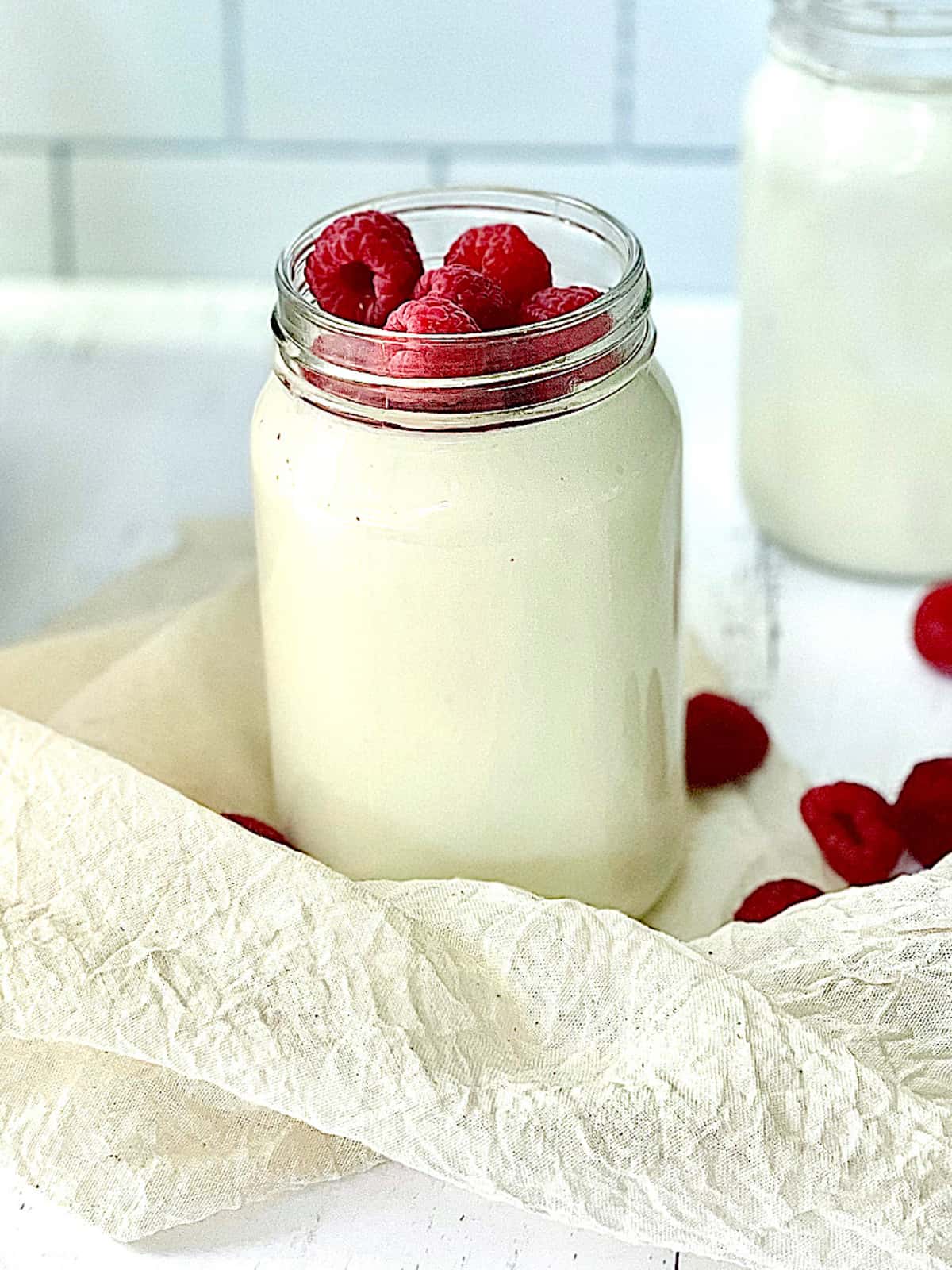
Step-By-Step Instructions
To make Greek yogurt, milk is first heated and then inoculated with bacterial cultures from a starter yogurt (yes, you need yogurt to make yogurt!) The bacterial cultures ferment the lactose in the milk, which causes it to thicken and develop its characteristic tangy flavor. After fermentation (incubation), the yogurt is strained through a cheesecloth or fine mesh to separate the liquid whey from the solids. This straining process removes whey, lactose, and some of the water content, resulting in a thicker yogurt with a higher concentration of proteins, fats, and other nutrients.
STEP 1: In a large dutch oven or heavy pot with a lid, heat 8 cups whole milk over medium heat, stirring often until it reaches 200°F, being careful not to let the milk burn on the bottom of the pot. *If milk begins to form a film on top, remove it using a slotted spoon and discard, as many times as necessary.
STEP 2: Turn off the heat and let cool to 135°F. While cooling, continue to remove any layer of film that forms.
STEP 3: When the warm milk reaches 135°F, transfer about 2 cups to a measuring cup and add ⅔ cup plain Greek yogurt. Whisk until smooth. *Cooling the milk takes about 20 minutes, but depends on how warm your kitchen is.
STEP 4: Pour the milk and yogurt mixture into the large pot of warm milk and whisk vigorously until incorporated, being careful not to scrape the bottom. Sometimes the milk will burn and if you scrape the bottom, the small chunks that come off will not incorporate into the yogurt- leaving you with clumps in the final product.
STEP 5: Cover and wrap in a large bath towel to incubate. Preheat your oven to the lowest temperature possible for a few minutes, then turn it off. Place the towel wrapped pot of yogurt mixture into the turned off oven. Leave the oven light on to provide an additional source of warmth. (*see notes for additional ideas). Allow to incubate untouched for 10-12 hours. If not straining, transfer yogurt to storage containers and refrigerate.
STEP 6 (optional) When done, place a cheesecloth over a mesh strainer and put the strainer over a large bowl. Scoop the yogurt into the strainer and let strain from 30 minutes to 24 hours in the refrigerator, depending on how thick you'd like the yogurt. Transfer to containers for storage and refrigerate.
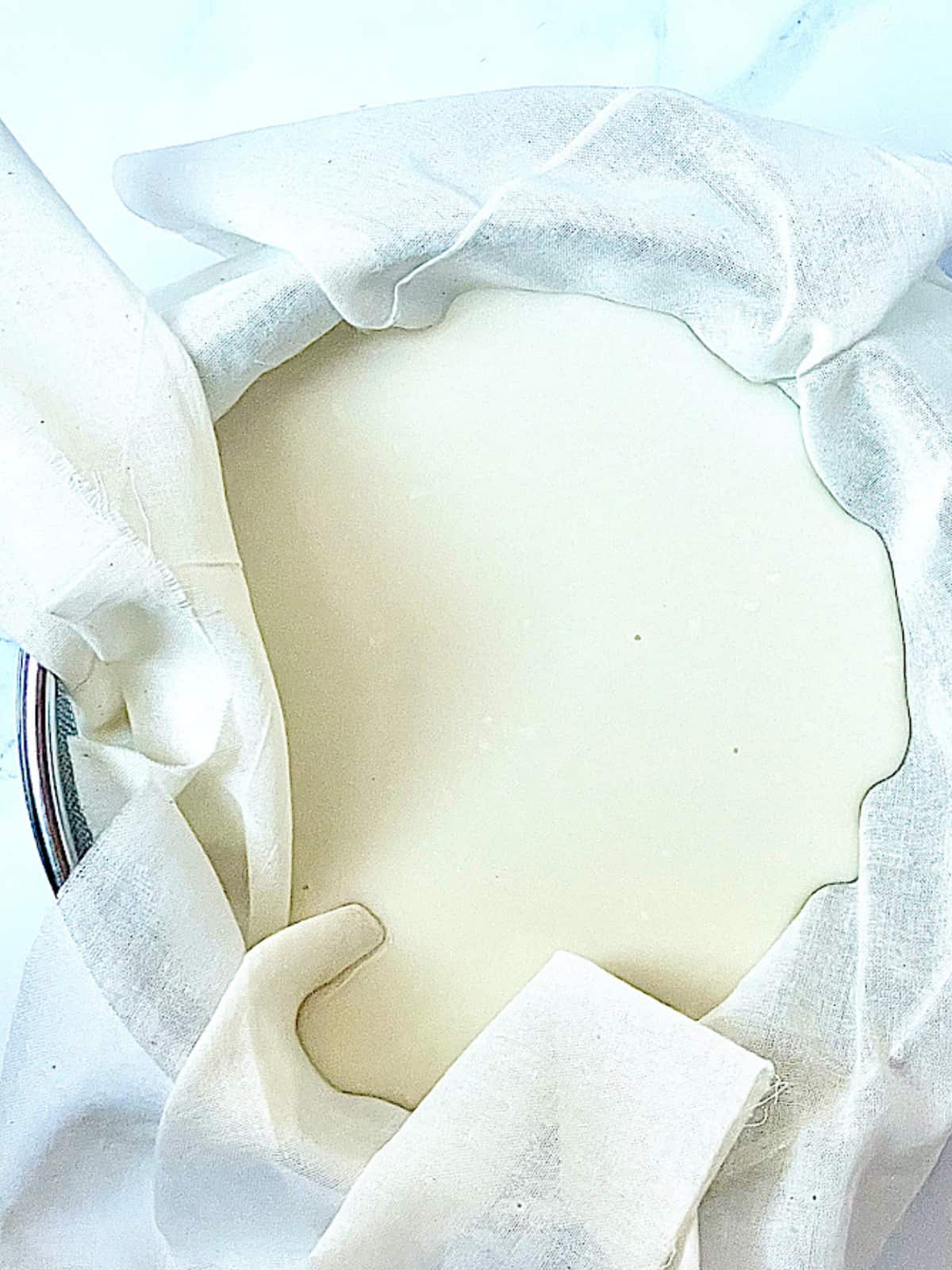
How To Store
Homemade yogurt keeps in the fridge for 3-4 weeks in an airtight covered container.
How To Keep Yogurt Warm When Fermenting
There are a few methods for keeping yogurt warm enough to ferment effectively.
OVEN: Preheat your oven to the lowest temperature possible (usually around 170°F or 75°C) for a few minutes, then turn it off. Place the towel wrapped pot of yogurt mixture into the turned off oven. Leave the oven light on to provide an additional source of warmth.
SLOW COOKER: You can use a slow cooker as an alternative to the oven. Turn the slow cooker to the low setting for about 10 minutes to warm it up. Turn it off and pour the yogurt mixture into the slow cooker and cover. Then wrap it in the towel to maintain maintain the warmth and let the yogurt incubate for the full 10-12 hours.
HEATING PAD: If you have a heating pad or electric blanket, you can place it under the pot to maintain a consistent temperature. Set the heating pad or electric blanket to the low setting and check the temperature periodically to ensure it remains in the desired range.
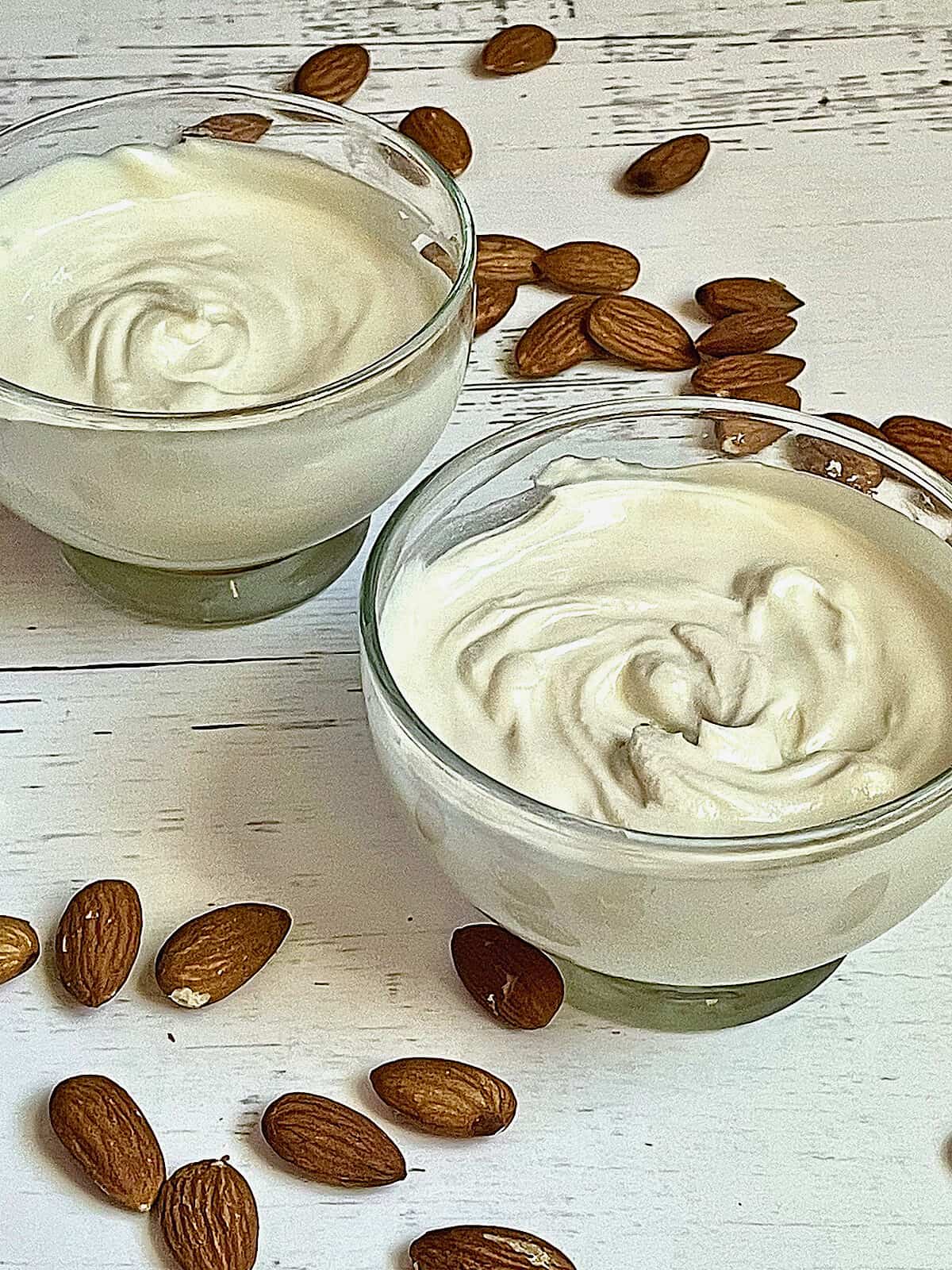
Chef's Tips
- The 10 tablespoons of yogurt is called a starter yogurt. You should choose a plain yogurt that you like, because your final product will taste similar to it. I choose a Greek yogurt because this creates a thicker initial yogurt and limits the amount of time straining. Plan to save some of your homemade yogurt to use as the starter for your next batch.
- The total time it takes to make homemade Greek yogurt is about 2 days. You want to set aside about an hour for the process of heating and cooling the milk, 10 to 12 hours to ferment and up to 24 hours for straining.
- Find a warm spot in your home that maintains a consistent temperature to appropriately ferment the yogurt. The ideal temperature for yogurt to remain at while incubating is between 100°F to 110°F.
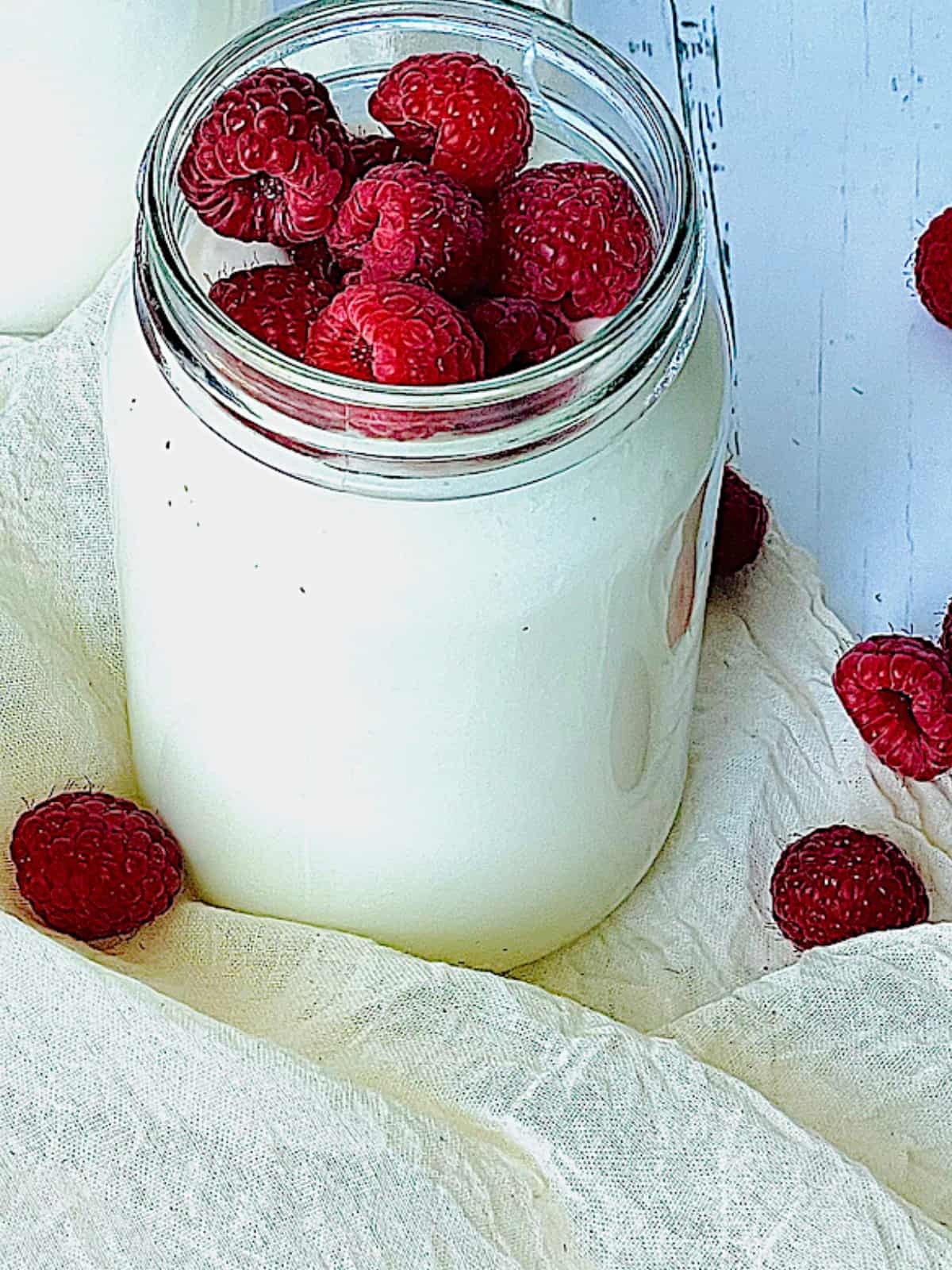
Recipe FAQs
Making yogurt at home is generally less expensive than buying it from a grocery store. This recipe yields about 64 ounces of yogurt and costs only as much as the 8 cups of milk and starter yogurt. For me, 64 ounces of store bought Greek yogurt costs about $10.
Yes, for a lower fat yogurt you can use lower fat dairy milks.
Greek yogurt is made by straining out the whey, which creates a thick and creamy texture. You should strain it from anywhere between 30 minutes to 24 hours depending on how thick you want it to be. However, you can choose not to strain the yogurt to create a less thick, traditional American style yogurt.
Don't waste the whey that is strained from the yogurt! Whey is a great addition to smoothies, pancakes, waffles, breads and more.
Ways to Use Greek Yogurt
My favorite way to enjoy plain yogurt is to drizzle it with honey or add fresh fruit. But there are countless ways to use it as part of everyday recipes and meals in addition to a snack on it's own.
- Make it part of your favorite breakfast, such as a topping for almond milk pancakes, fluffy oat milk pancakes or cottage cheese waffles.
- As a thickener in recipes like mashed sweet potatoes, mashed cauliflower and mashed potatoes.
- Smoothies, such as pineapple banana, banana peach, spinach strawberry, mango pineapple or strawberry banana.
- To make homemade mango popsicles or pina colada popsicles.
- Make a summer berry salad with a cinnamon honey yogurt dressing.
- In creamy soups, like slow cooker loaded potato soup.
- Add to muffins to make them soft and fluffy, like these morning glory muffins.
- Add to breads to make them light and tender, such as a savory tomato basil bread.
- In milkshakes, like a healthy mango milkshake or peach milkshake.
Recipe

Homemade Greek Yogurt
Equipment
- Digital Thermometer
- Dutch oven or similar heavy pot with lid
- Bath towel
- cheesecloth optional
- heating pad optional
Ingredients
- 8 cups whole milk *see notes for other milk varieties
- ⅔ cup plain Greek yogurt or one single serving 5 ounce container
Instructions
- In a large dutch oven or heavy pot with a lid, heat 8 cups whole milk over medium heat, stirring often until it reaches 200°F, being careful not to let the milk burn on the bottom of the pot. *If milk begins to form a film on top, remove it using a slotted spoon and discard, as many times as necessary.
- Turn off the heat and let cool to 135°F. While cooling, continue to remove any layer of film that forms.
- When the warm milk reaches 135°F, transfer about 2 cups to a measuring cup and add ⅔ cup plain Greek yogurt . Whisk until smooth.
- Pour the milk and yogurt mixture into the large pot of warm milk and whisk vigorously until incorporated, being careful not to scrape the bottom.
- Cover and wrap in a large bath towel to incubate. Preheat your oven to the lowest temperature possible (usually around 170°F or 75°C) for a few minutes, then turn it off. Place the towel wrapped pot of yogurt mixture into the turned off oven. Leave the oven light on to provide an additional source of warmth. (*see notes for additional ideas). Allow to incubate untouched for 10-12 hours. If not straining, transfer yogurt to storage containers and refrigerate.
- OPTIONAL: When done, place a cheesecloth over a mesh strainer and put the strainer over a large bowl. Scoop the yogurt into the strainer and let strain from 30 minutes to 24 hours, depending on how thick you'd like the yogurt.






Marianne says
Thank you for your recipe. Can I freeze a cup of this homemade yogurt then use it in future batches?
Kristina Tipps says
Yes, you can.